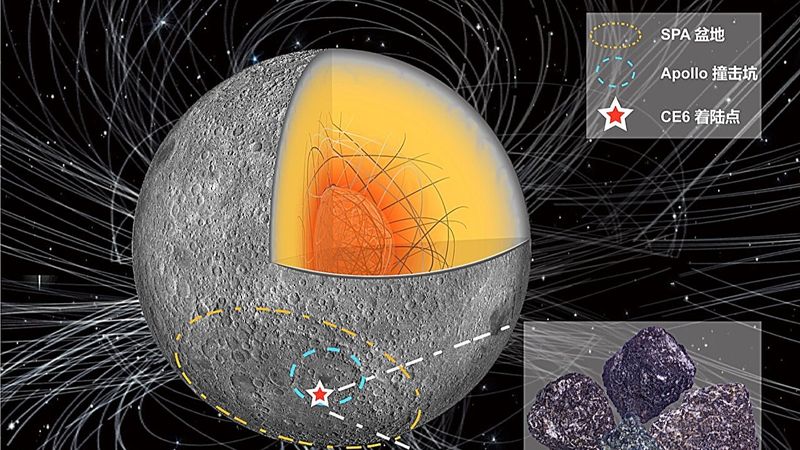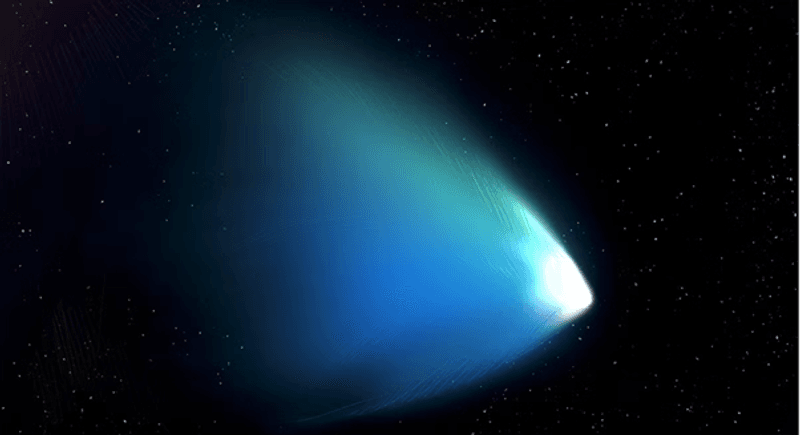The Moon used to have a magnetic field, powered similarly to how the geodynamo powers the magnetism of Earth. Unlike our planet though, the Moon became solid and the magnetic field disappeared. But before it diminished completely, it appears to have had a resurgence, according to the latest analysis of the rocks carried back to Earth from Chang’e 6.
The mission is the only one to have brought back material from the far side of the Moon. It landed on June 1, 2024, inside the Apollo crater, which is 537 kilometers (334 miles) across. This large crater actually sits in an even larger depression: the South Pole-Aitken Basin, an area of massive interest for understanding the Moon's past.
Chang’e 6 brought back almost two kilograms (4.4 pounds) of material, most of which is dated at 2.8 billion years old. That material has been used to uncover more about volcanic activity on the Moon, but also contained the surprise about the magnetic field.
Previous rocks had shown that the magnetic field had been dropping, with a particularly sharp decline 3.1 billion years ago. Researchers had assumed that by 3 billion years ago, the magnetic field was basically tiny until it stopped altogether.
But the Chang’e 6 sample shows a field around 2.8 billion years ago of between 5 and 21 microteslas. That’s between 10 and 40 percent of our planet's magnetic field today, and stronger than the measurements from 3.1 billion years ago. Somehow the weakening reversed for a while. The question is, how?
Combining this data, with analysis of rocks from other sites around the Moon, the team suggests that between 3.5 and 2.8 billion years ago, the Moon experienced a very unstable dynamo. As a consequence, the strength of the magnetic field waxed and waned.
They believe that the lunar magnetic field might have been driven by the magma ocean thought to have existed for a time inside the Moon. An alternative theory is that it was a result of the interplay between the various rotational forces of the Moon, though it is possible that a combination of the two could be the reason as well. The core of the Moon crystalizing might also play a role.
There is clearly more to find out about the Moon’s past magnetism and how it changed over time before it eventually came to an end.
The study is published in the journal Nature.



![A dense cluster of bright stars, each with six large and two small diffraction spikes, due to the telescope’s optics. They have a variety of sizes depending on their brightness and distance from us in the cluster, and different colours reflecting different types of star. Patches of billowing red gas can be seen in and around the cluster, lit up by the stars. Small stars in the cluster blend into a background of distant stars and galaxies on black.]](jpg/glittering-m.jpg)

